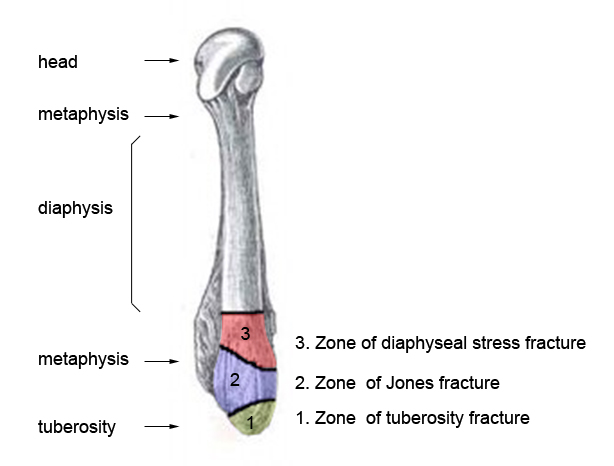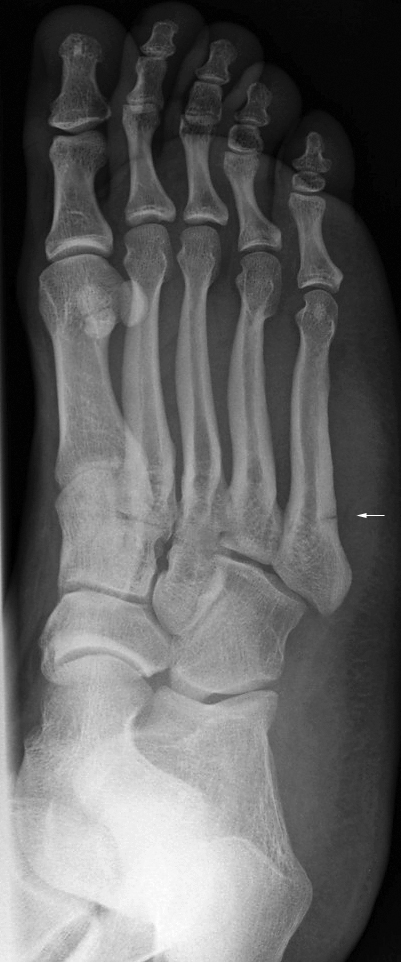Jones Fracture
Jones fracture involves a fracture at the base of fifth metatarsal at metaphyseal-diaphyseal junction, which typically extends into the 4-5 intermetatarsal facet; A Jones fracture is located within 1.5 cm distal to tuberosity of 5th metatarsal and should
not be confused with the more common avulsion fracture of the 5th metatarsal styloid process <a class="external" href="http://www.e-radiography.net/radpath/j/jones_fracture.htm" rel="nofollow" target="_blank">(http://www.e-radiography.net/radpath/j/jones_fracture.htm)
</a>
Jones Fracture Classification Confusion
adapted from<a class="external" href="http://thefootblog.wordpress.com/2006/11/07/jones-fracture-a-case-report-with-special-emphasis-on-fixation-placement/" rel="nofollow" target="_blank">http://thefootblog.wordpress.com/2006/11/07/jones-fracture-a-case-report-with-special-emphasis-on-fixation-placement</a>The Jones fracture describes a fracture to the base of the fifth metatarsal. It was named after Sir Robert Jones, who in 1902, sustained this fracture while dancing around a maypole at a garden dance. The injury is caused by stress plantarflexion and inversion. <a class="external" href="http://thefootblog.wordpress.com/2006/11/07/jones-fracture-a-case-report-with-special-emphasis-on-fixation-placement/" rel="nofollow" target="_blank">(http://thefootblog.wordpress.com/2006/11/07/jones-fracture-a-case-report-with-special-emphasis-on-fixation-placement)</a>
There has been some debate and confusion as to the correct descriptions of fractures of the proximal fifth metatarsal. Al Kline notes the followingIn reviewing the literature, these ‘zones’ differ and some are delineated by distance from the end of the bone. For instance, fractures that are within 1.5 cm to the end of the styloid process is considered a ‘avulsion’ fracture. Anything distal to that is a ‘metatarsal’ fracture.
There has also been 3 zones of fracture descrbed in metatarsal base fractures:
1) zone of tuberosity fracture
2) zone of Jones fracture and
3) zone of diaphyseal stress fracture.
For our simplified classification, it is fractures that involve the styloid process that are considered true ‘avulsion’ fractures. Fractures to the body of the fifth metatarsal base are considered ‘base fractures’ , and fractures distal to the body of the fifth metatarsal base are considered ‘metatarsal’ or diaphyseal fractures. In most of the literature, this is also the most common region for stress fractures associated with a Jones fracture.Jones fracture of the proximal 5th metatarsal (white arrow)

